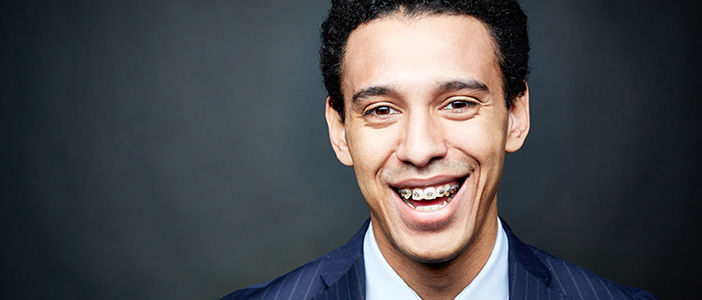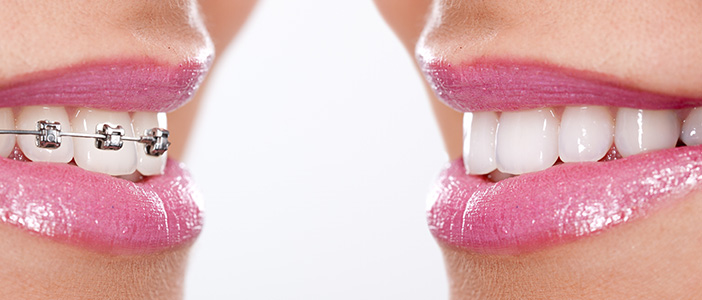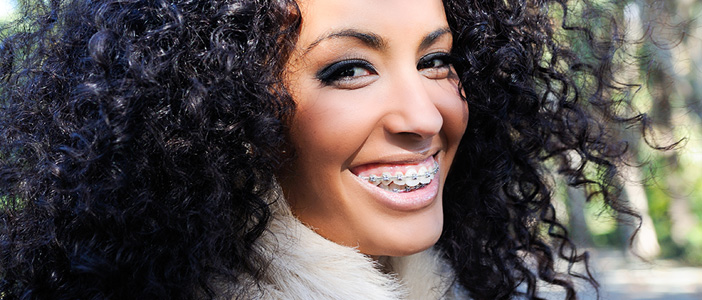A Consultation with Dr. Janina I. Braun | Featured on Dear Doctor
Dear Doctor,
I would like to fix my crooked teeth, but I just turned 60. Is it too late for me to get braces?
Dear John,
Healthy teeth can be moved at any age, so there’s no such thing as “too old” for braces. In fact, nowadays about one out of every five orthodontic patients is an adult. Yet this figure represents only a small portion of adults who could actually benefit from orthodontic treatment.
Research has shown that the frequency of malocclusion (“mal” – bad; “occlusion” – bite) in adults is comparable to what we see in children and adolescents. Perhaps as many as three quarters of adults have some form of orthodontic problem — crowding of teeth or drifting of teeth after extractions, for example.
A great-looking smile is a surefire way to boost self-confidence and studies have demonstrated that orthodontic treatment can even enhance an adult’s career opportunities and social life. There is also a potential health benefit, as misaligned teeth can be harder to clean, setting the stage for tooth decay and gum disease. Straightening teeth can also make chewing more comfortable. So there are many reasons to consider orthodontic treatment at any age.
Perhaps as many as three quarters of adults have some form of orthodontic problem.
What will determine if you are a good candidate for orthodontic treatment, then, will not be your age; it will be your current state of periodontal health (“peri” – around; “odont” – tooth), your general health, and what type of problem you are trying to fix. Periodontal (gum) disease, which can lead to the loss of tooth-supporting bone, is more prevalent in adults than in adolescents. This is an important consideration because orthodontic treatment works by gently moving teeth within the bone that supports them. And orthodontic treatment in the presence of periodontal disease can aggravate the disease and make it worse. While bone loss does not preclude successful orthodontic treatment, it is essential that any existing periodontal disease be brought under control before treatment begins.
Orthodontists (dentists who have specialized in the diagnosis of and treatment of malocclusion, which includes the study of growth and development of the jaws and teeth) can use a variety of orthodontic treatment options. Braces, the traditional little metal or plastic brackets attached to the teeth, through which wires run, are just one example of the way in which pressure and tension are applied to move teeth slowly and gently in the desired direction. Pressure will cause a portion of the bone next to the root to resorb (be dissolved by the body), while on the opposite (tension) side new bone formation occurs. This new bone builds up in the space the root moved out of, solidifying its new position.
It is essential that any existing periodontal disease be brought under control before orthodontic treatment begins.
There are a few medical conditions that may contra-indicate orthodontic treatment. Examples include severe heart-valve disease, bleeding disorders, leukemia, and severe uncontrolled diabetes. If you have any of these conditions, check with your physician and orthodontist (or dentist if he/she is doing the treatment) to make sure all the implications are understood. Also, some drugs used primarily by adults for arthritis or osteoporosis can make tooth movement more difficult. Other medications have a tendency to dry out the mouth, as does smoking. Mouth dryness may make orthodontic treatment uncomfortable and will increase your risk of tooth decay.
Another consideration is whether the malocclusion is skeletal in nature, meaning that it is related to the way your jaws fit together. In a full-grown adult this might require orthognathic surgery (“ortho” – to straighten; “gnathic” – jaw). However, for most people with less serious orthodontic problems (crowding or improper spacing, for example), the lack of physical growth will have little or no bearing on the treatment or the results.
You will find that a lot has changed since you were a teenager in terms of the orthodontic appliances themselves. Clear or colorless braces can sometimes be used instead of the metal ones, and are a lot less noticeable than they used to be, and some can even be placed on the lingual (tongue) side of the teeth. Virtually invisible clear aligners are also appropriate in many cases.
These newer appliance options no doubt have contributed to the increase in adults seeking treatment, with most reporting that they are very happy with the results. So remember that when it comes to straightening teeth, there is no age cutoff. If a better smile is something you really want, schedule a consultation with your dentist or an orthodontist to discuss your treatment options. As the saying goes, you’re only as old as you feel.
– See more at: http://www.deardoctor.com/inside-the-magazine/issue-21/orthodontics-for-the-older-adult/#sthash.HFxS3avS.dpuf
Looking for an orthodontist in Beaverton, Oregon? Biermann Orthodontics is a cutting-edge orthodontic practice that serves Beaverton and Molalla, OR, and focuses on providing world-class customer service and efficient treatment. We strive to create stunning smiles in the shortest amount of time without ever sacrificing quality.







